3 How to examine a sick person
3 How to examine a sick person
3 How to examine a sick person
You also want an ePaper? Increase the reach of your titles
YUMPU automatically turns print PDFs into web optimized ePapers that Google loves.
34<br />
Where There Is No Doc<strong>to</strong>r 2011<br />
EARS, THROAT, AND NOSE<br />
Ears: Always check for signs of pain and<br />
infection in the ears-especially in a child with fever<br />
or a cold. A baby who cries a lot or pulls at his ear<br />
often has an ear infection (p. 309).<br />
Pull the ear gently. If this increases pain, the<br />
infection is probably in the tube of the ear (ear<br />
canal). Also look for redness or pus inside the ear.<br />
A small flashlight or penlight will help. But never<br />
put a stick, wire, or other hard object inside the ear.<br />
Find out if the <strong>person</strong> hears well, or if one side is<br />
more deaf than the other. Rub your thumb and fingers <strong>to</strong>gether near the <strong>person</strong>’s ear <strong>to</strong><br />
see if he can hear it. For deafness and ringing of the ears see page 327.<br />
Throat and Mouth: With a <strong>to</strong>rch (flashlight) or sunlight <strong>examine</strong> the mouth and<br />
throat. To do this hold down <strong>to</strong>ngue with a spoon handle or have the <strong>person</strong> say<br />
‘ahhhhh...’ Notice if the throat is red and if the <strong>to</strong>nsils (2 lumps at the back of the throat)<br />
are swollen or have spots with pus (see p. 309). Also <strong>examine</strong> the mouth for sores,<br />
inflamed gums, sore <strong>to</strong>ngue, rotten or abscessed teeth and other problems. (Read<br />
Chapter 17.)<br />
Nose: Is the nose runny or plugged? (Notice if and how a baby breathes through<br />
his nose.) Shine a light inside and look for mucus, pus, blood; also look for redness,<br />
swelling, or bad smell. Check for signs of sinus trouble or hayfever (p. 165).<br />
SKIN<br />
It is important <strong>to</strong> <strong>examine</strong> the <strong>sick</strong> <strong>person</strong>’s whole body, no matter how mild the<br />
<strong>sick</strong>ness may seem. Babies and children should be undressed completely. Look<br />
carefully for anything that is not normal, including:<br />
• sores, wounds, or splinters<br />
• rashes or welts<br />
• spots, patches, or any unusual markings<br />
• inflammation (sign of infection with<br />
redness, heat, pain and swelling)<br />
• swelling or puffiness<br />
• swollen lymph nodes (little lumps in the<br />
neck, the armpits, or the groin, see p. 88)<br />
Always <strong>examine</strong> little children between the<br />
but<strong>to</strong>cks, in the genital area, between the fingers<br />
and <strong>to</strong>es, behind the ears, and in the hair (for<br />
lice, scabies, ringworm, rashes, and sores).<br />
For identification of different skin<br />
problems, see pages 196 -198.<br />
• abnormal lumps or masses<br />
• unusual thinning or loss of hair, or<br />
loss of its color or shine (p. 112)<br />
• loss of eyebrows<br />
(leprosy? p. 191)



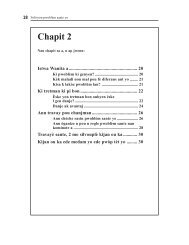
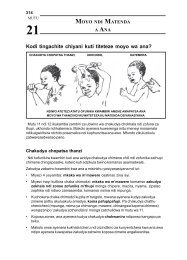
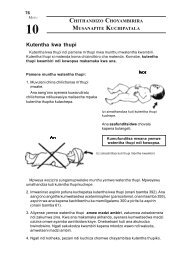
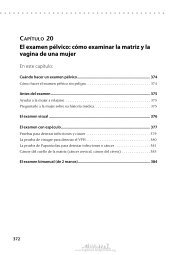
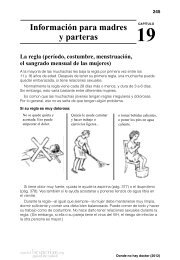
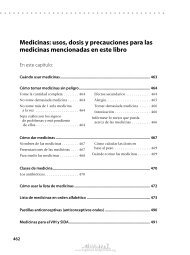
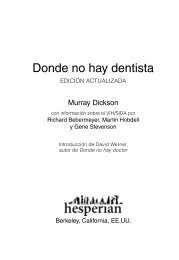
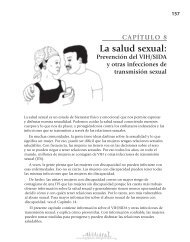
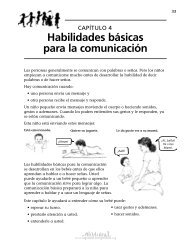

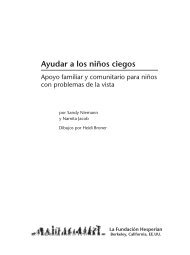
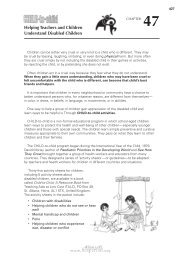
![kl/jf/ lgof]hg](https://img.yumpu.com/10041849/1/184x260/kl-jf-lgofhg.jpg?quality=85)
